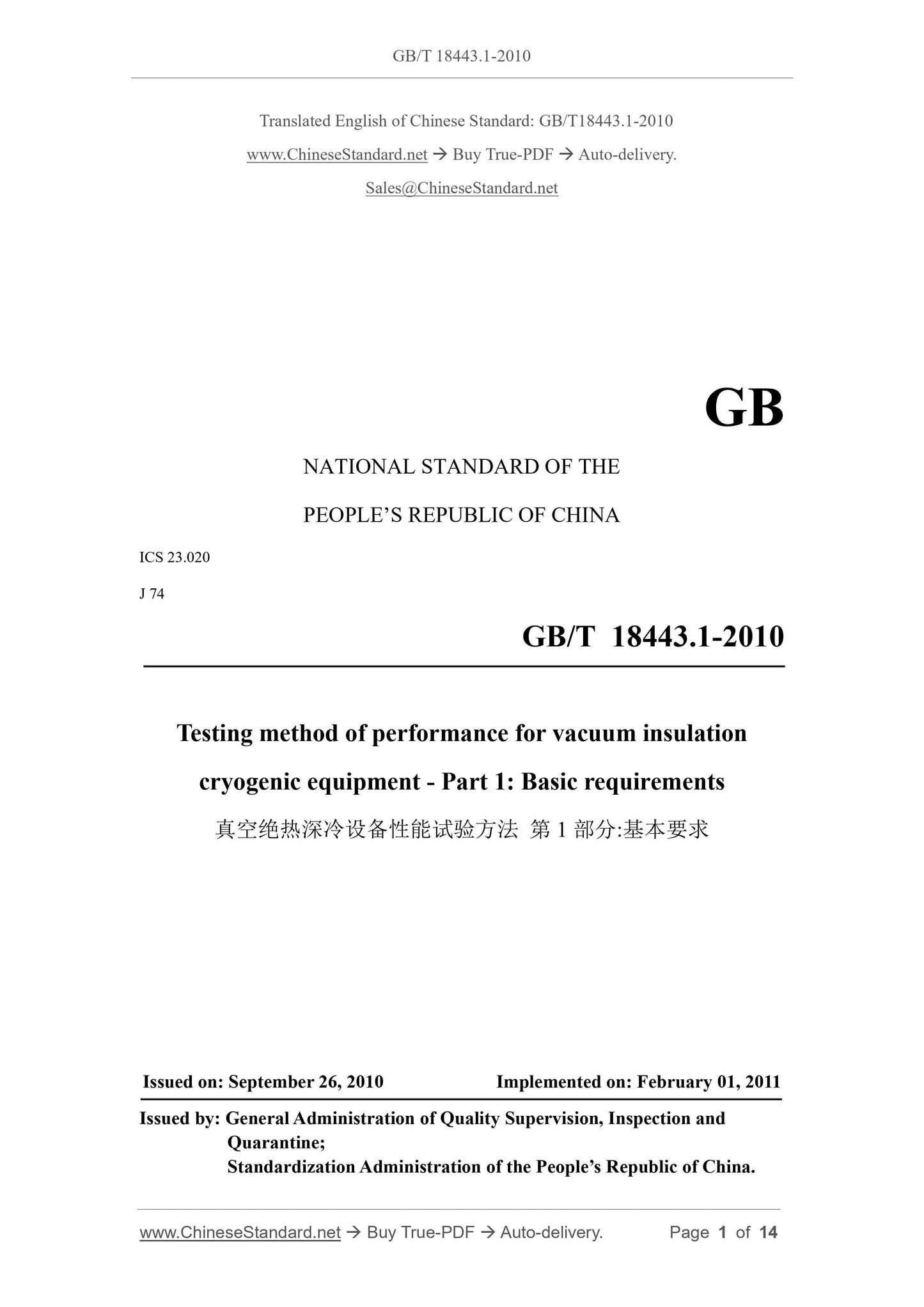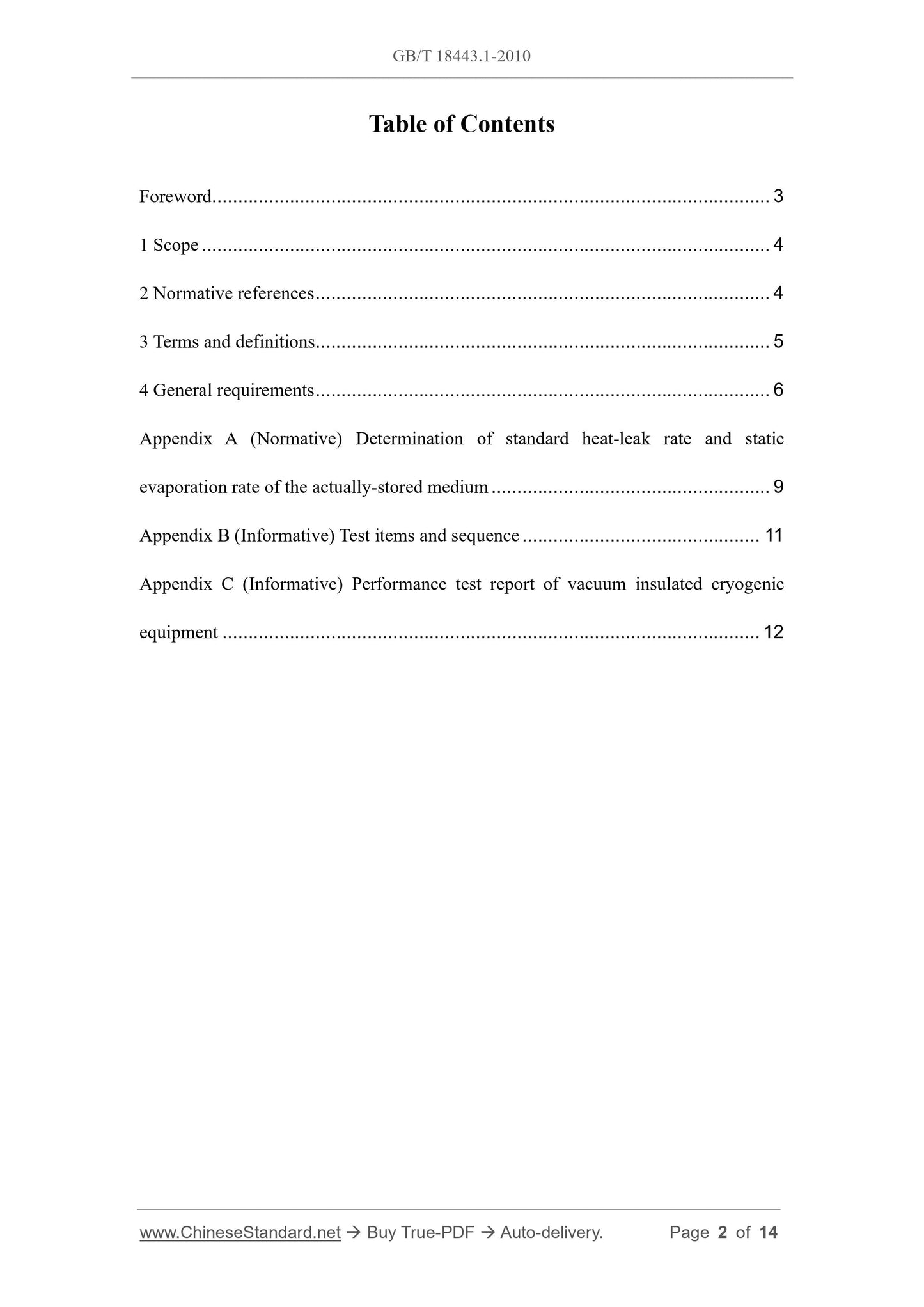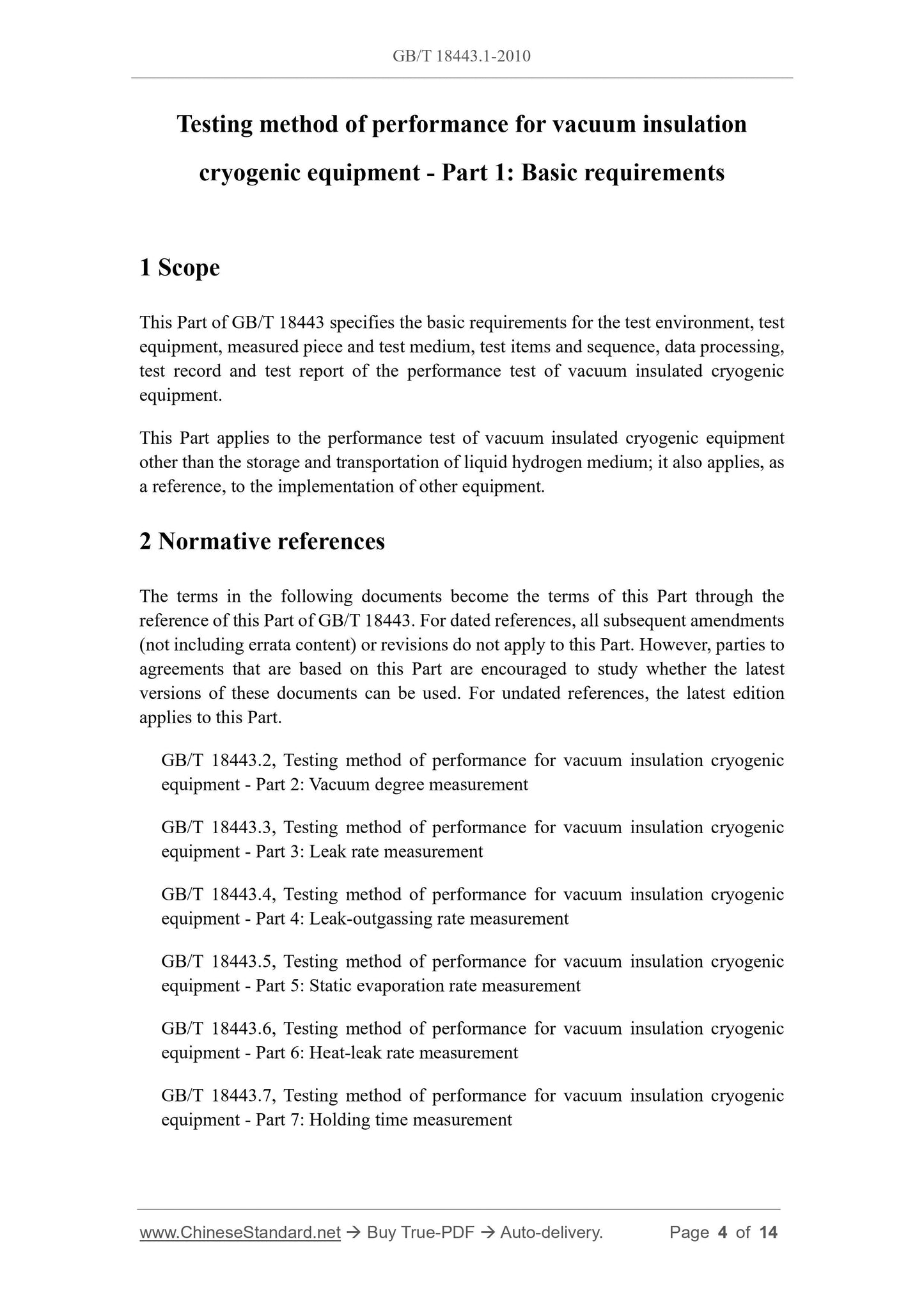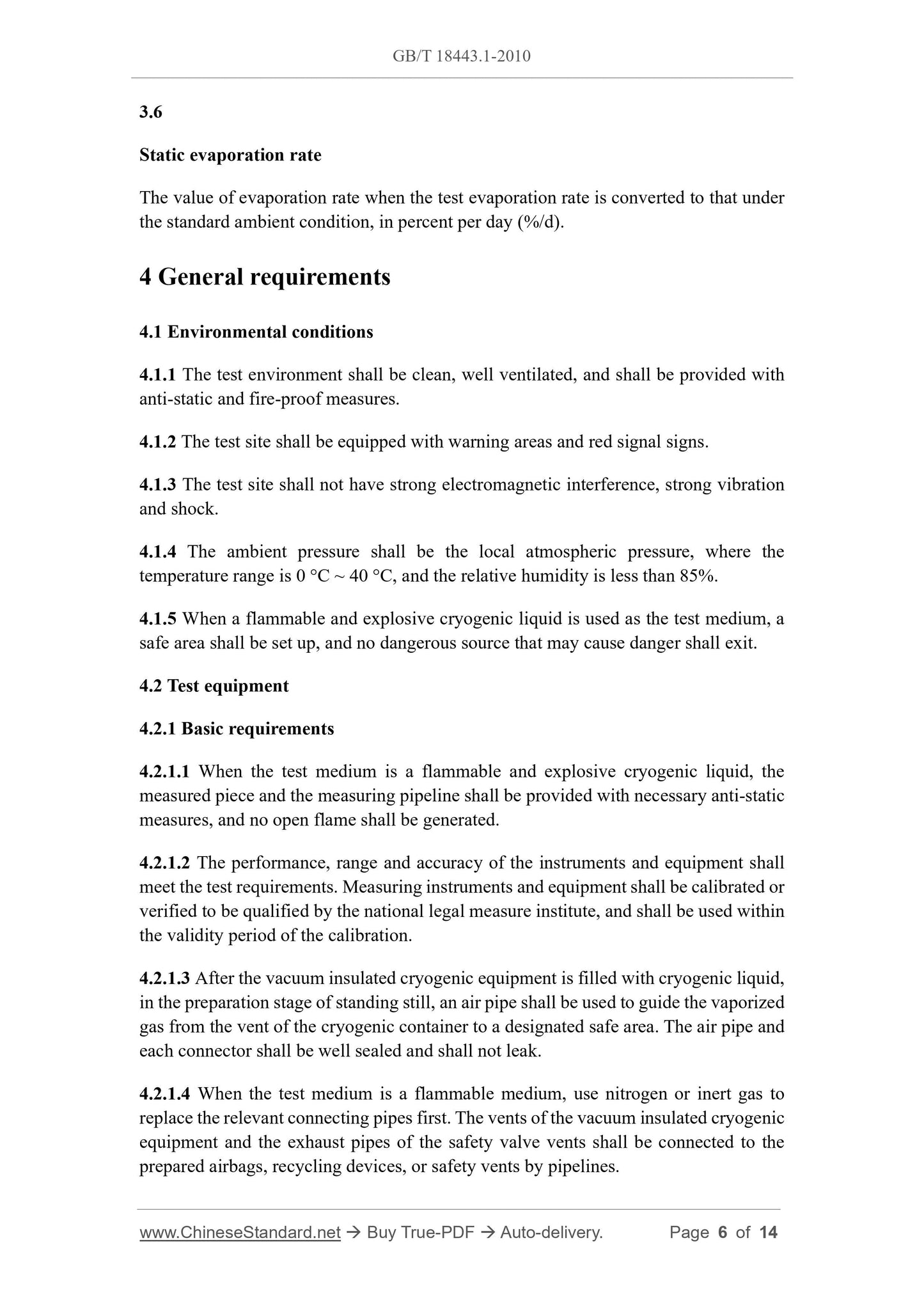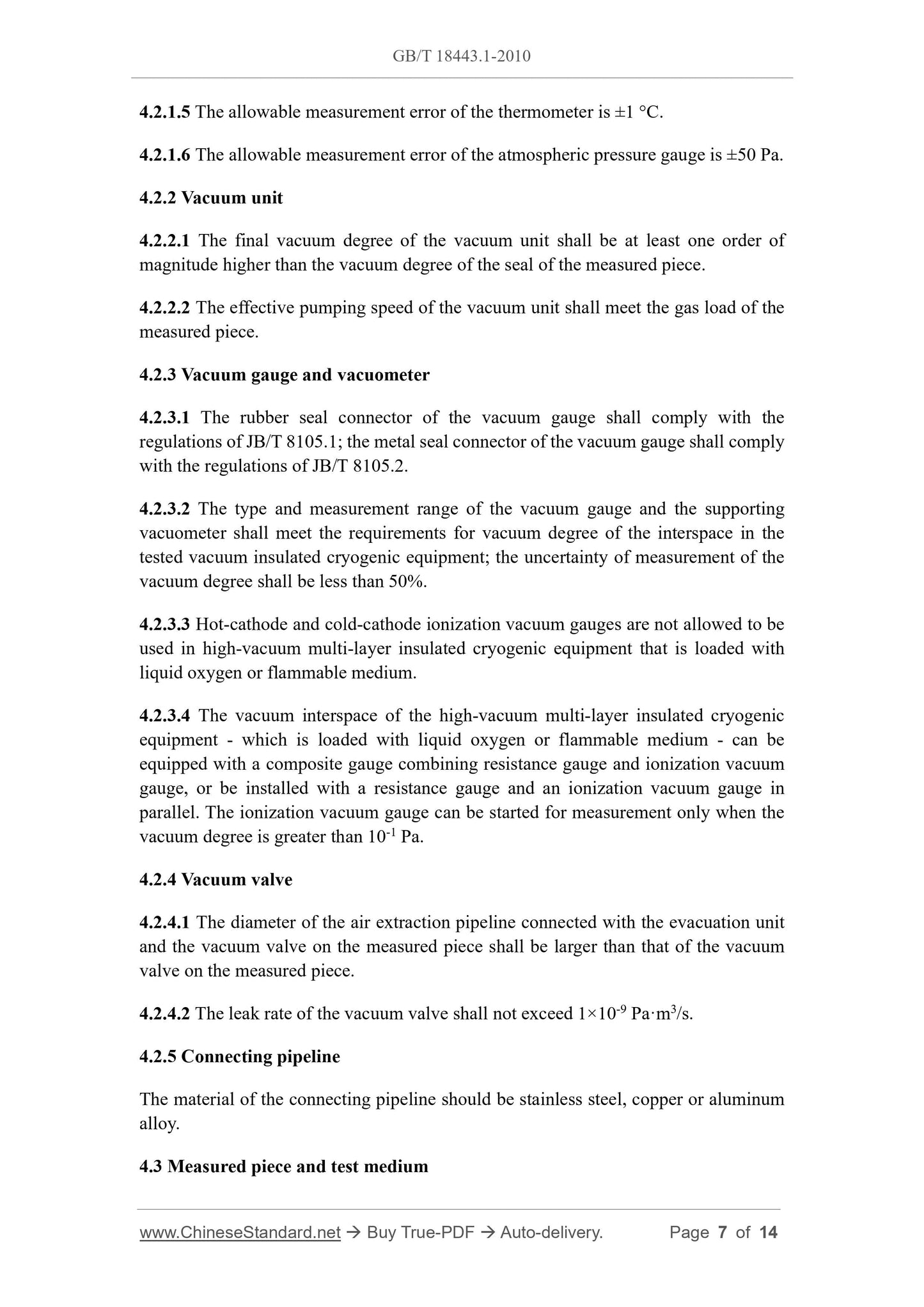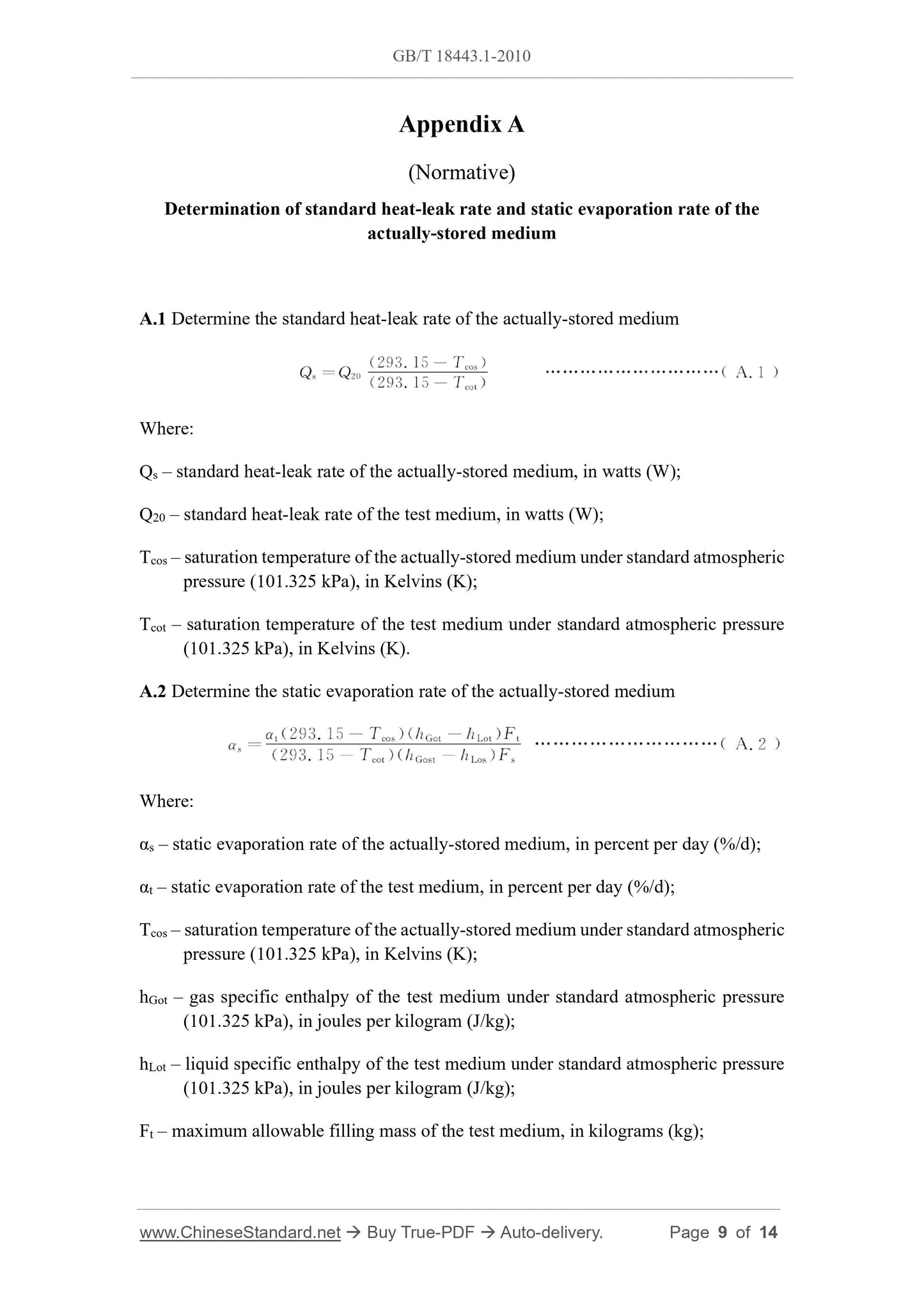1
/
of
6
www.ChineseStandard.us -- Field Test Asia Pte. Ltd.
GB/T 18443.1-2010 English PDF (GB/T18443.1-2010)
GB/T 18443.1-2010 English PDF (GB/T18443.1-2010)
Regular price
$70.00
Regular price
Sale price
$70.00
Unit price
/
per
Shipping calculated at checkout.
Couldn't load pickup availability
GB/T 18443.1-2010: Testing method of performance for vacuum insulation cryogenic equipment - Part 1: Basic requirements
Delivery: 9 seconds. Download (and Email) true-PDF + Invoice.Get Quotation: Click GB/T 18443.1-2010 (Self-service in 1-minute)
Newer / historical versions: GB/T 18443.1-2010
Preview True-PDF
Scope
This Part of GB/T 18443 specifies the basic requirements for the test environment, testequipment, measured piece and test medium, test items and sequence, data processing,
test record and test report of the performance test of vacuum insulated cryogenic
equipment.
This Part applies to the performance test of vacuum insulated cryogenic equipment
other than the storage and transportation of liquid hydrogen medium; it also applies, as
a reference, to the implementation of other equipment.
Basic Data
| Standard ID | GB/T 18443.1-2010 (GB/T18443.1-2010) |
| Description (Translated English) | Testing method of performance for vacuum insulation cryogenic equipment - Part 1: Basic requirements |
| Sector / Industry | National Standard (Recommended) |
| Classification of Chinese Standard | J74 |
| Classification of International Standard | 23.020 |
| Word Count Estimation | 11,179 |
| Date of Issue | 2010-09-26 |
| Date of Implementation | 2011-02-01 |
| Quoted Standard | GB/T 18443.2; GB/T 18443.3; GB/T 18443.4; GB/T 18443.5; GB/T 18443.6; GB/T 18443.7; GB/T 18443.8; JB/T 8105.1; JB/T 8105.2 |
| Regulation (derived from) | National Standard Approval Announcement 2010 No.6 (Total No.161) |
| Issuing agency(ies) | General Administration of Quality Supervision, Inspection and Quarantine of the People's Republic of China, Standardization Administration of the People's Republic of China |
| Summary | This standard specifies the vacuum insulated cryogenic equipment performance test on the test environment, was seized items and test medium, , basic requirements of test records and test reports, etc., pilot projects and order, data processing test equipment. This section applies to performance test equipment vacuum insulated cryogenic liquid hydrogen storage medium except, Other equipment implementation. |
Share
